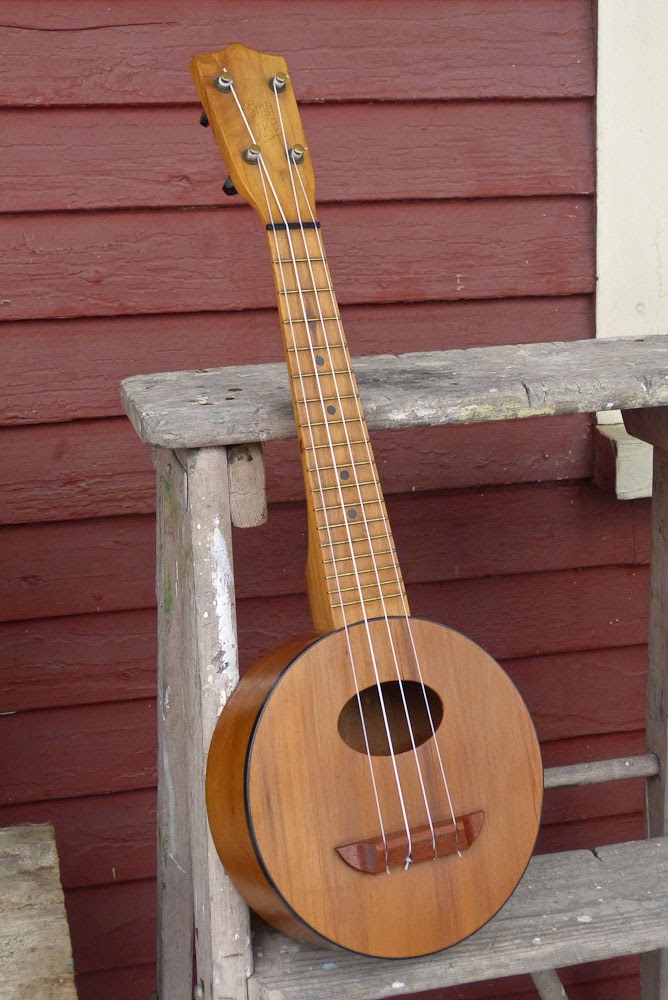c.1925 Lyon & Healy "Camp Uke" Ukulele (#2)
Update 2014: This uke has come back in trade/resale and I just did a little more work on it including a bolted modification for the neck joint (one screw like normal in the top side and a hanger bolt -- Gibson banjo style -- in the bottom) to make it more snug and a hairline crack reglue on the back. Pictures have been updated. And now... Update 2015: I've updated pictures yet again.
This is Camp Uke #2, sister to this one (click here) and identical save for minor details: this one has one or two fewer tiny hairline cracks on the top, I removed the leading edge "bridge saddle" when I set this one up, and there's a chip out of the bridge for the C string slot. Its back was also entirely reglued, too.
Tone-wise, this one is slightly mellower and sweeter but with a touch less volume than the other Camp Uke. It's still made entirely from the same nyssa (black gum/tupelo) wood, but you know how "the same but different" identical-model instruments can be!
The tuners on this one are L&H patent, brass-shafted pegs as well.
This uke had roughly the same work done to it, too: fret level/dress, bridge recutting for better action, crack repairs to the top (some cleats), and back-seam regluing.
These CUkes are so nicely understated.
The L&H patent pegs are among my favorite old-style friction peg designs as far as the stuff that typically came on period ukes are concerned... they're simple and durable and fit snugly so that even if you lose an adjustment screw it's likely that the peg would still function.
Here's a pic of the overkill adjustable bolt on the inside that I added recently. This snugs that neck up securely and shouldn't need adjustment for a long, long, long time. The problem with many Camp Ukes is that the necks are attached with one screw in the top part of the heel that inevitably loosens up and causes action to get higher over time. This nips that in the bud.
Black celluloid binding, too, on that top edge.
Here's a pic of the overkill adjustable bolt on the inside that I added recently. This snugs that neck up securely and shouldn't need adjustment for a long, long, long time. The problem with many Camp Ukes is that the necks are attached with one screw in the top part of the heel that inevitably loosens up and causes action to get higher over time. This nips that in the bud.
Black celluloid binding, too, on that top edge.
Here's a closeup of the repaired hairline/dryness crack on the back.
















Comments